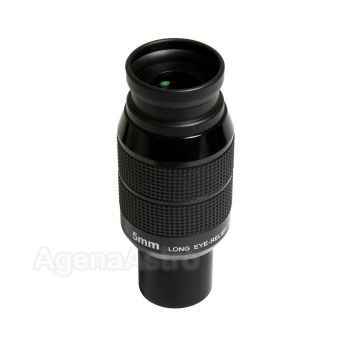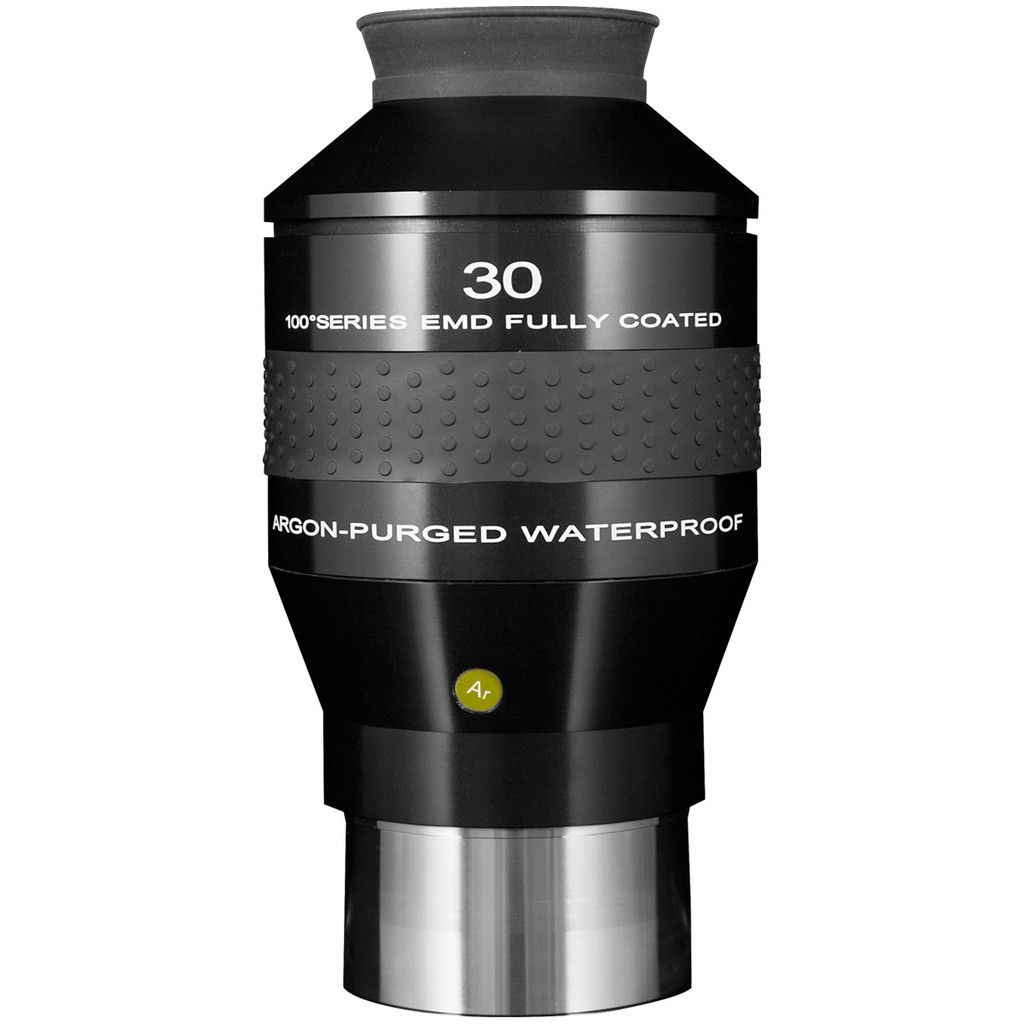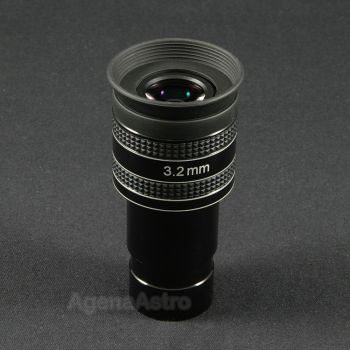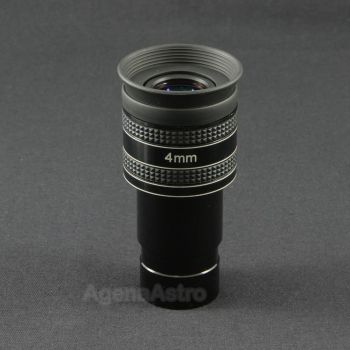Telescope Eyepieces
Choosing the right eyepiece for your telescope is often just as important as the telescope itself. Read our Telescope Eyepiece Guide to help you decide which one is best for you!
-
 Explore Scientific 1.25" 52° Series Argon-Purged Waterproof Eyepiece - 3mmOur Price: $89.99In StockFree US Shipping
Explore Scientific 1.25" 52° Series Argon-Purged Waterproof Eyepiece - 3mmOur Price: $89.99In StockFree US Shipping - Closeout
 Long Perng 1.25" 55º Long Eye Relief Eyepiece - 3mm # E3LESale Price: $83.60 Our Price: $95.00In StockFree US Shipping
Long Perng 1.25" 55º Long Eye Relief Eyepiece - 3mm # E3LESale Price: $83.60 Our Price: $95.00In StockFree US Shipping - Closeout
 Long Perng 1.25" 55º Long Eye Relief Eyepiece - 5mm # E5LESale Price: $77.90 Our Price: $95.00In StockFree US Shipping
Long Perng 1.25" 55º Long Eye Relief Eyepiece - 5mm # E5LESale Price: $77.90 Our Price: $95.00In StockFree US Shipping -
 Kokusai Kohki 1.25" Fujiyama HD-OR Orthoscopic Eyepiece (Japan) - 4mmOur Price: $95.00Out of StockFree US Shipping
Kokusai Kohki 1.25" Fujiyama HD-OR Orthoscopic Eyepiece (Japan) - 4mmOur Price: $95.00Out of StockFree US Shipping -
 Kokusai Kohki 1.25" Fujiyama HD-OR Orthoscopic Eyepiece Set (Japan) - 8 EyepiecesOur Price: $750.00Out of StockFree US Shipping
Kokusai Kohki 1.25" Fujiyama HD-OR Orthoscopic Eyepiece Set (Japan) - 8 EyepiecesOur Price: $750.00Out of StockFree US Shipping -
 Meade Series 5000 1.25" 82º Premium Wide Angle Eyepiece - 4mm # 607040Our Price: $149.99Out of StockFree US Shipping
Meade Series 5000 1.25" 82º Premium Wide Angle Eyepiece - 4mm # 607040Our Price: $149.99Out of StockFree US Shipping
Telescope Eyepiece Guide
Telescope eyepieces play a huge role in how good the view is through any telescope, and are often as important as the telescope itself. Beginner telescopes are often capable of producing great views, but one of the ways manufacturers keep prices down is by including subpar eyepieces. This means that if you’re only using the included eyepieces, you’re likely not using your telescope to its full potential.
Even the best telescopes can give poor views when matched with a low-quality eyepiece, so it’s important to take the time to research the right eyepieces for your goals and budget. In this guide, we’ll go over which factors to consider when shopping for a telescope eyepiece.
Best Telescope Eyepieces
Eyepieces for telescopes vary widely in design and function, so there is no one true best telescope eyepiece. Simply put, the best telescope eyepieces are those which provide the best view for what you’re observing. You can read about the different specifications of eyepieces below to help you decide which is best for you.
Eyepiece Focal Length
The focal length is the main defining feature of any eyepiece. Like in a telescope, focal length is the distance from the main lens to the focal point where the light is focused and seen by your eyes. The focal length determines the magnification and field of view: a shorter focal length (like 10mm or less) means higher magnification and a smaller field of view.
On the flip side, a longer focal length (like 25mm or more) means lower magnification and a larger field of view. You will generally see eyepieces ranging in focal lengths from around 5mm to 40mm for most uses.

Long focal length eyepieces
Long focal length eyepieces, generally considered to be 20mm or more in focal length, are great for broad views of the night sky or the entire Moon. Since their view is so wide, long focal length eyepieces are also ideal for finding objects first before switching to a medium or low focal length eyepiece.
|

Medium focal length eyepieces
Medium focal length eyepieces (10 to 20mm) are ideal for closer views of large objects like the Moon and galaxies. Medium focal length is a good do-it-all eyepiece to have in any arsenal.
|

Short focal length eyepieces
Short focal length eyepieces (10mm or less) are great for viewing planets & ultra close ups of the Moon when sky conditions allow. It helps to have a medium or long focal length eyepiece to first find and center the object you're looking for, and then switch to a short focal length eyepiece.
|

Zoom eyepieces
Zoom eyepieces (variable focal length) are great for viewing a variety of objects without having to switch eyepieces. If you're looking for one eyepiece to do it all, a zoom eyepiece is for you. It's worth noting that zoom eyepieces are usually inferior in optical quality to fixed focal length eyepieces, but they have made great strides in quality recently.
|
Eyepiece Magnification
Magnification is the most important specification of any eyepiece. Unlike focal length on its own, magnification takes into account your telescope's power. Magnification is found by dividing the focal length of the telescope by the focal length of the eyepiece. To get a higher magnification, you use a shorter focal length eyepiece, which will give you a narrower field of view. If you want a lower magnification and wider field of view, use a longer focal length eyepiece.
Ex: 1000mm telescope focal length / 25mm eyepiece focal length = 40x magnification
Which magnification to use is largely dependent upon the object you plan to observe. Using a lower magnification eyepiece can help to locate your target before switching to a higher magnification for closer views such as when viewing planets or getting up-close views of the Moon.
Maximum Useful Magnification
Maximum Useful Magnification is the estimated magnification limit any telescope can achieve under perfect sky conditions, e.g. 250x. A higher magnification does not always equate to a better visual experience, as the target can become difficult to see with too high of a magnification. Telescopes are limited to how good the view is by their aperture and other factors, namely the atmospheric conditions.
For beginner observers, we recommend that you use no more than 30x the aperture of your telescope as measured in inches. So for a 6” telescope, you can in theory get a good view with a magnification up to 180x. Beyond this, you will likely only be magnifying the atmospheric conditions and not the object itself.
Most visual astronomers also find it helpful to make use of a focal extender, commonly referred to as a Barlow lens. A barlow lens is a separate lens placed in the telescope focuser before the eyepiece to expand the effective focal length, often by 2x, 3x, or 5x.
This allows a single eyepiece to be used at a variety of focal lengths, especially helpful for close-up views of the lunar surface and planetary features. You can imagine this as a more cost-friendly way of essentially doubling your eyepiece collection!
|
Eyepiece Field of View
The field of view (FOV) of a telescope eyepiece refers to the width of the area that can be seen through the eyepiece. The FOV is determined by the design of the eyepiece and can vary greatly between different types of eyepieces. A typical beginner eyepiece often provides around a narrow 45 degree field of view, while some more advanced designs often provide fields of view over 100 degrees!
A wider FOV is desirable for observing large objects such as star clusters and nebulae, while a narrower FOV is better suited for observing small objects such as planets and stars. You can use tools such as the Astronomy Tools Field of View Calculator to get an idea of what to expect when viewing various targets with different eyepieces.
Eyepiece Design
There are several different types of eyepieces available, each with its own unique design and features. Some of the most popular types of eyepieces include Plössl, Erfle, Orthoscopic, and Kellner, among many others. The major difference in these designs has to do with the optical configuration within the eyepiece itself, though all are capable of providing an outstanding visual experience.
Each type of eyepiece has its own pros and cons, such as the size of the FOV, the degree of eye relief, and the sharpness of the image. Most beginner telescopes come with one or two Plossl eyepieces included, commonly around 10mm and 25mm focal lengths.
Eyepiece Eye Relief
Eye relief refers to the distance from the eyepiece to your eye, and is an important factor to consider when choosing an eyepiece. A long eye relief is important for eyeglass wearers, as it allows them to see the full field of view without having to remove their glasses.
On the other hand, a short eye relief can make it difficult for eyeglass wearers to see the full field of view, and can also cause discomfort for those who do not wear glasses. Similar to many other telescope measurements, eye relief is measured in millimeters, and are commonly seen ranging from 2mm to 20mm or greater.
Eyepiece Size and Weight
The size and weight of an eyepiece can also be important factors to consider when choosing an eyepiece. Larger and heavier eyepieces may be more difficult to handle and can put strain on the focuser of the telescope. On the other hand, smaller and lighter eyepieces may be more comfortable to use but may not provide as clear an image as a larger and heavier eyepiece. A critical measurement to consider with all eyepieces is the barrel diameter, most commonly seen in 1.25" and 2" formats.
Many telescopes allow use of either size barrel, so verify your telescope's individual focuser specifications prior to any purchase. While 1.25" eyepieces are perfectly suitable for viewing the night sky, more seasoned astronomers typically lean toward the larger 2" models, allowing for larger fields of view and often higher quality optics.
Eyepiece Price
The price of an eyepiece can vary greatly, ranging from as little as $25 dollars for a basic Plössl design, to several hundred dollars for the higher end models. These higher end models, such as those made by Tele-Vue and Explore Scientific, commonly provide higher contrast and a sharper view.
You can typically expect better visual quality, a larger FOV, and longer eye relief with pricier eyepieces, while less expensive eyepieces may not provide as clear of an image. For beginners, we recommend first using the eyepieces provided with your telescope to get a feel for them before deciding on any new eyepiece additions.
Looking to learn even more about eyepieces? Our detailed guide, How to Choose Eyepieces for Your Astronomy Telescope, is a great place to begin. We also have many other detailed guides on our Articles & Guides Page under the Eyepieces / Binoviewers section!























